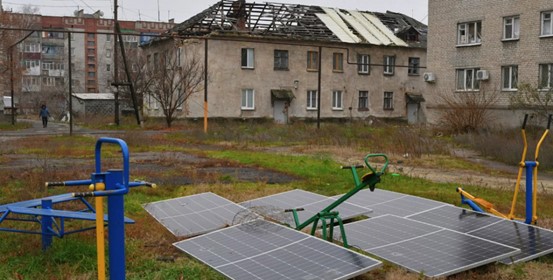When the night sky in Tehran was torn apart by air raid sirens and sleepless searchlights lit up on the streets of Tel Aviv, this four-day military conflict exposed a sobering reality - in the modern battlefield where precision guided weapons and electromagnetic pulse attacks intertwine, the energy supply system is becoming a key factor affecting the sustainability of war.
At around 3:20 am local time on the 13th, a huge explosion was heard in the city of Tehran, the capital of Iran. Image source: Xinhua News Agency
Israel's airstrikes on Iranian military targets and Tehran's missile counterattacks not only caused significant casualties on both sides, but also led to power grid paralysis and communication interruptions in many areas, once again pushing energy storage technology from the mass market to the forefront of the war.
The survival rules validated on the Ukrainian battlefield are being replayed in the Middle East. When traditional energy infrastructure is reduced to ruins, portable energy storage devices become a key link in maintaining the operation of the war machine and the survival of civilians. A household energy storage system developed by a Chinese energy company utilizes the coordinated operation of photovoltaic panels and lithium iron phosphate batteries to establish a 72 hour energy lifeline in the event of power outages. This energy storage device with IP67 protection level has withstood the extreme temperature difference test of -20 ℃ to 60 ℃. Its modular design allows for rapid expansion according to battlefield needs, ensuring the continuous operation of individual communication equipment and supplying power to key medical equipment in field hospitals.

Photovoltaic panels on the streets of Ukrainian cities
Military demand is reshaping the energy storage technology landscape with unprecedented intensity. A tactical level microgrid system developed by a German company integrates lithium-ion battery packs, fuel cells, and diesel generators into a three-level energy security system. The system can be airdropped and deployed by C-130 transport aircraft, and once deployed, it will generate a stable power output of 500kW. Its intelligent scheduling algorithm can automatically switch energy supply modes based on different load priorities such as radar stations and command centers. In recent NATO joint military exercises, this system supported field hospitals to operate continuously for 14 days, with a 65% reduction in fuel consumption compared to traditional solutions, demonstrating a revolutionary breakthrough in energy efficiency under the war economy.
The military application of solid-state battery technology has opened up a new dimension of combat. The military energy storage backpack launched by a Japanese technology company integrates a 20kWh solid-state battery pack with flexible solar film, with a total weight of only 35 kilograms, but can support individual communication equipment and reconnaissance drones for continuous operation for 72 hours. In simulated urban street fighting tests, the reconnaissance team equipped with this system achieved a drone takeoff and landing frequency four times that of traditional troops, and improved intelligence transmission efficiency by 300%. According to laboratory tests, the system's charge and discharge cycle life can reach 8000 times, which is about three times that of traditional military batteries (traditional battery life is about 500-1000 times).
The shadow of war has not only spurred technological breakthroughs, but also disruptive innovations in energy business models. The "Energy as a Service" program launched by an Israeli startup deploys containerized energy storage power stations in the Golan Heights, enabling remote monitoring and energy dispatch through satellite communication. Local residents can use cryptocurrency to pay for electricity bills, and the system automatically switches to off grid mode to avoid network attacks. Its blockchain ledger technology ensures that energy transaction records cannot be tampered with. This decentralized energy network has withstood the test of electromagnetic pulse weapons in actual combat, providing a new operating paradigm for wartime economic systems.
The global arms race is accelerating the iteration of energy storage technology. The US Department of Defense has included micro nuclear batteries in the procurement list for individual equipment, requiring them to be deployed in combat before 2026; The EU's "Energy Shield" plan plans to invest 300 billion euros in the research and development of anti-interference energy storage technology; The explosion-proof energy storage cabinets of Chinese enterprises have passed NATO certification, and their three proof design can withstand the impact of shrapnel.
As missiles pierce the night sky, energy storage technology is rewriting the rules of modern warfare - from Kiev homes to Gaza hospitals, from drone swarms to electromagnetic railguns, the way energy is stored determines the boundaries of weapon effectiveness. The battery technology tempered in the midst of war may usher in the next era of energy solutions, just like the civil technology revolution sparked by the Cold War space race.
In this technological game without gunpowder smoke, energy storage technology has been upgraded from a war supporting role to a strategic equipment, and its development trajectory is profoundly affecting the future trend of the global energy pattern.

